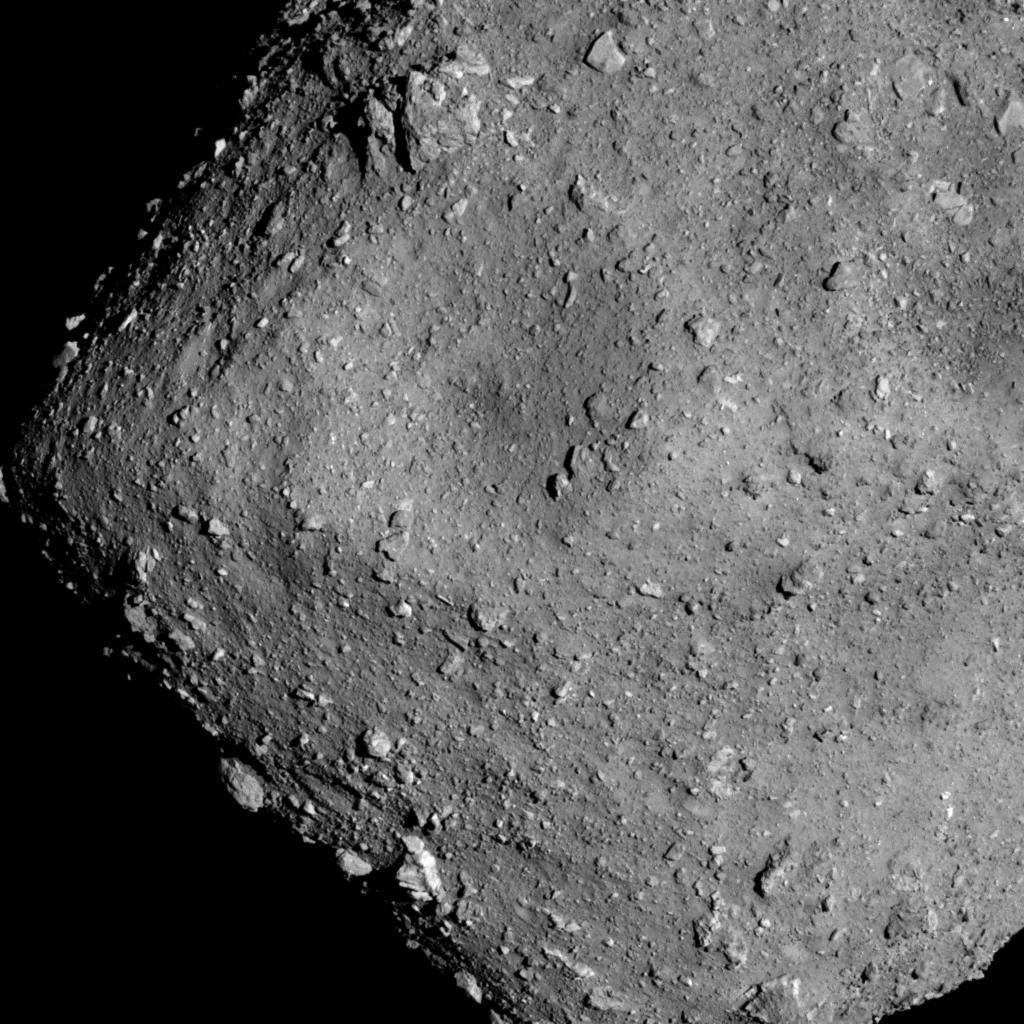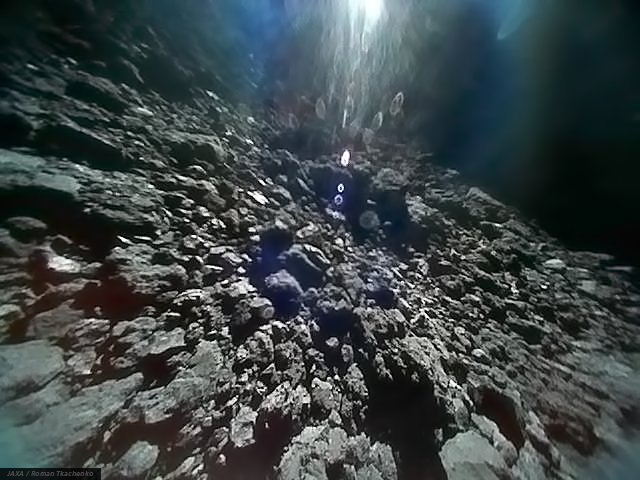mahdavi3d
Active member
- Joined
- Nov 25, 2011
- Messages
- 536
- Reaction score
- 99
- Points
- 43
planetary.org : Ryugu from Hayabusa2, 20 July 2018

JAXA, University of Tokyo, Kochi University, Rikkyo University, Nagoya University, Chiba Institute of Technology, Meiji University, University of Aizu, AIST.
Hayabusa2 obtained this image from a position less than 6 kilometers away from Ryugu's surface on 20 July 2018 at around 07:00 UTC. Near the center is a bowl-shaped crater, the largest on the asteroid.

JAXA, University of Tokyo, Kochi University, Rikkyo University, Nagoya University, Chiba Institute of Technology, Meiji University, University of Aizu, AIST.
Hayabusa2 obtained this image from a position less than 6 kilometers away from Ryugu's surface on 20 July 2018 at around 07:00 UTC. Near the center is a bowl-shaped crater, the largest on the asteroid.




